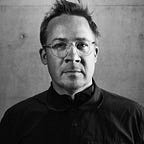How to choose the right design agency for your startup
“Our startup needs design help. Should we hire a big agency, a small agency, or a freelancer?”
In my career — which includes running an agency, working as a freelancer, and helping startups as an advisor and investor — I’ve heard this question countless times. Unfortunately, there is no one-size-fits-all answer. Here’s a framework I use to help startups decide what kind of outside design help is right for them.
(Warning: you’ll see a lot of questions, and it might seem overwhelming. Don’t worry — just write down the answers as best you can and we’ll put it all together at the end.)
What do you need?
Let’s start here: what kind of deliverables do you expect? What are your goals for the project?
Everyone you’ll talk to has different specialties, and it’s important to find an agency or freelancer that specializes in the kind of work you need.
Here are some of the major categories you should consider:
Brand and visual identity
- Do you need a logo? Are you looking to establish your brand? Do you need a complete visual identity to reinforce what the brand means?
- Do you expect an informal deliverable (e.g. a logo with rough brand guidelines) or a comprehensive package including brand vision, voice, and use guidelines?
Marketing and communications
- Do you need help with the content, messaging, and structure of your marketing website?
- Do you need help with your social media strategy? Do you need support over time to execute that strategy?
- What about advertising, email campaigns, product introduction videos, analytics, or marketing insights?
- Do you plan to build a marketing department internally, or are you focused on product design and engineering?
Product ideation and user experience
- Do you know what problem your product is solving, and for whom?
- Do you need help designing and testing your product?
- Have you figured out how all the pieces are going to fit together — stories, content, screens, UI elements, video, animation, audio?
- Do you need a polished, sophisticated product at this stage? Or just a basic functional interface that will capture the attention of users and the imagination of investors?
With answers to these questions, you can limit your search to the agencies and freelancers who specialize in the kind of work you need. Listen to what kind of work they say they do, but don’t forget to look at their portfolio for concrete examples of kind of deliverables you expect.
What’s the state of your business?
Once you’ve figured out what you need, you’ll want to consider the state of your business — size, stage, culture, etc — so you can look for help that will be a great fit.
I like to evaluate a company along three axes:
Velocity
How fast is your business growing? Is your primary focus to continue feeding and accelerating growth? Or do you plan to evolve more slowly, refining the technology and product while looking for the right application along the way?
Trajectory
Where is your company headed? Are you offering a specialized product that’s aiming for a specific result? Or are you defining a new business model, paving the way as you go? Or maybe your business is so revolutionary that it will affect an entire culture.
Maneuverability
How easy would it be to shift your focus if you identified a more attractive business goal? Would you be hindered by infrastructure, team, or culture? Or would you be able to react nimbly to the new opportunity you identified?
Putting it all together
Let’s use your answers to find a good starting point for your search. Here are a few example scenarios that should help you decide where to look for your own company’s design needs.
Big agency scenario
My company is focused on a clear target (known trajectory) and we need to move quickly (high velocity). We can’t afford to make mistakes (low maneuverability). We need an experienced team that offers a range of high-caliber services. We need a big design agency.
Small agency scenario
My company is growing rapidly due to unexpected demand (high velocity), but we’re not quite sure where the plateau is (unknown trajectory), or how our focus may change along the way (high maneuverability). We need a team that can paint this plane while it’s flying. We need a small agency.
Freelancer scenario
My company is just starting out. We have a really great idea, but the target isn’t entirely clear (unknown trajectory). There’s not a tremendous amount of urgency or competitive pressure (low velocity). We need a partner who can help us explore and experiment with limited cost and uncertain expectations (high maneuverability). We need a freelancer.
(What’s the difference between a small and large agency? A small agency is generally fewer than 20 people — a few seasoned specialist leads being supported by more generalist or junior staff. Small agencies tend to create ad hoc teams by assigning individuals to your project; large agencies have existing teams they can put to work.)
As always, asking for referrals from friends and trusted colleagues is a good way to find high-quality agencies and freelancers. But make sure to consider what you need and the state of your businesswhen you’re screening and interviewing candidates. Hopefully this framework will help you find a provider who can not only give you what you need, but work closely within your company’s unique situation.
